A timeless Classic French Mustard Vinaigrette recipe that you can use as a base for endless variations. This flavourful dressing is one that everyone should have in their repertoire.
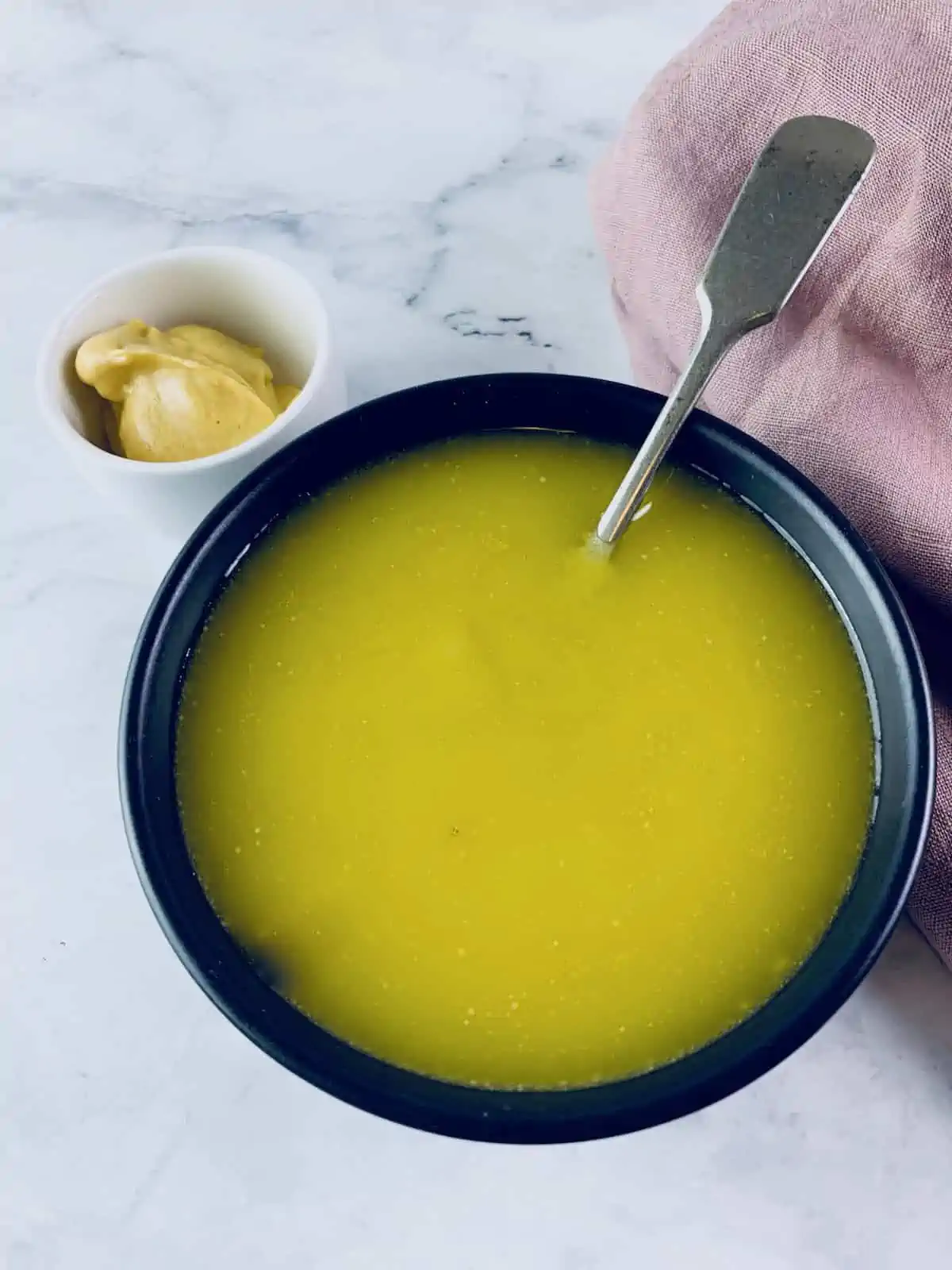
A good French Dijon Vinaigrette is just so quick and easy to make, but it can quickly transform a bowl of greens or a plate of either cooked or raw vegetables into something magical.
What is Dijon Mustard?
As its name suggests, this mustard favourite originated in the city of Dijon, which is the capital of the Burgundy region of France.
The traditional Dijon mustard recipe includes white wine and ground brown mustard seeds, along with salt and other spices.
One of the crucial ingredients in traditional Dijon mustard is verjuice which is made from unripe grapes. This tart liquid gives Dijon mustard its characteristic complex sharp flavour.
Why you should make your own vinaigrette
For the five minutes it takes to make this all-time classic French mustard dressing you gain a lot in the lip-smacking flavour compared to store-bought versions.
It is so much better for you as it doesn’t contain any preservatives or fillers and it is a hell of a lot cheaper than the lacklustre vinaigrettes found at your deli or supermarket.
So three very good reasons to give it a try 😉.
Let’s Talk Ingredients
Our French Mustard Vinaigrette recipe only has four ingredients the majority of which are kitchen staples:
- Olive Oil - we much prefer a good quality olive oil in our family rather than any refined/hydrogenated oils such as corn, canola or safflower oils. If you find its flavour too intense, try a virgin or extra virgin variety or even an avocado oil works really well.
- White Wine Vinegar - make sure you use good quality wine vinegar as the cheaper ones tend to be slightly acidic. I will sometimes use champagne vinegar for special occasions, which really gives it a flavour boost.
- French shallots - also called eschallots or just plain shallots are the small pinkish-coloured onions you may have noticed at your supermarket or greengrocer. If you can’t find them, then swap them with some finely diced red onion instead. Avoid brown or white onions here as they aren’t sweet and are too pungent.
- Dijon Mustard - is the star of the show so again it is important to invest in a good quality brand, we like the Maile blend in our family.
Some Variations to Try
- Nut Oil - replace half the oil with a nut oil such as walnut or hazelnut, I like to throw in some of the same roasted nuts into the salad as well for added flavour and crunch.
- Lemon Juice - for some Mediterranean flavour replace the vinegar with some lemon juice.
- Fruity Vinegar - some of my favourites to try are raspberry vinegar, pomegranate or apple cider vinegar. You may need to add some sweetener with the apple cider vinegar as some blends are quite tart.
- Herby Vinegar - I love tarragon vinegar as it is also a French favourite and matches perfectly with Dijon. Thyme and rosemary are also great alternatives to try.
- Seedy Mustard - which is milder than Dijon, as some seeds are left whole and not crushed to release their flavour.
- Honey - for a sweet alternative add a teaspoon of honey to your French mustard vinaigrette.
- Garlic - for an extra shot of flavour I will sometimes use a minced clove of garlic but only if I am going to be using it straight away. If I make a big batch to keep in the fridge, I will leave it out garlic goes bad after just a few days.
You Will Need
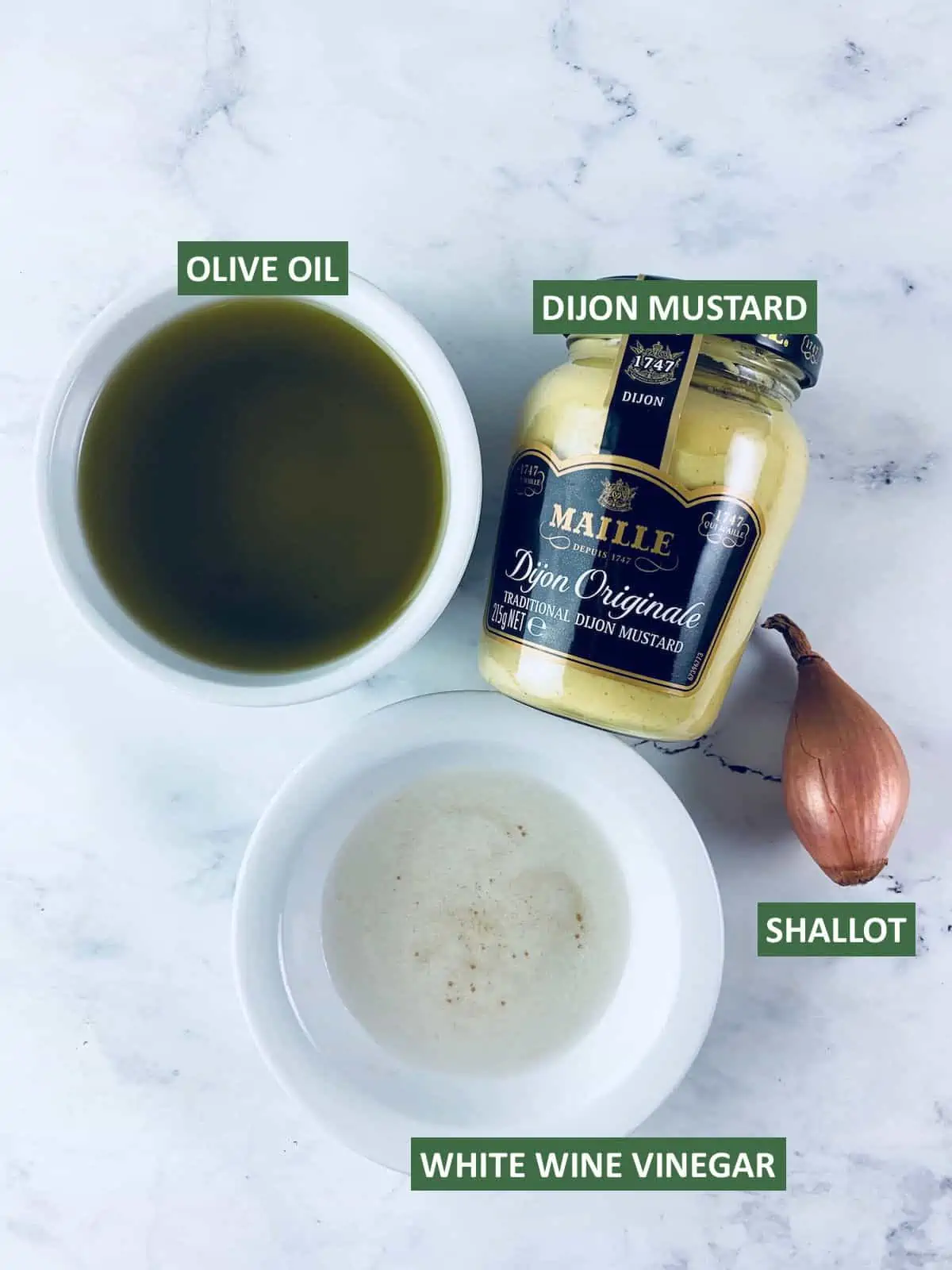
What Can I Use It On?
- Drizzle it on your favourite green salad.
- Try it with steamed or roasted vegetables such as peas, beans, asparagus, broccoli, carrots or potatoes.
- Spoon it on fresh vegetable salads such as tomato, cabbage or avocado.
- Use it as a marinade for perfectly grilled steak or grilled chicken.
- Great with fish, either grilled or oven baked.
- Use it as a dipping sauce for raw vegetable crudités.
- Drizzled over boiled eggs as a snack.
How to Make It
Step-by-Step Instructions
1. Take a container with a tight-fitting lid – glass jars are perfect for this.
2. Put all the dressing ingredients into the container, season with sea salt and cracked black pepper, cover it and shake until emulsified.
3. Taste and adjust seasonings according to your liking.
4. Pour into a glass container that can be tightly sealed and stored in the fridge.
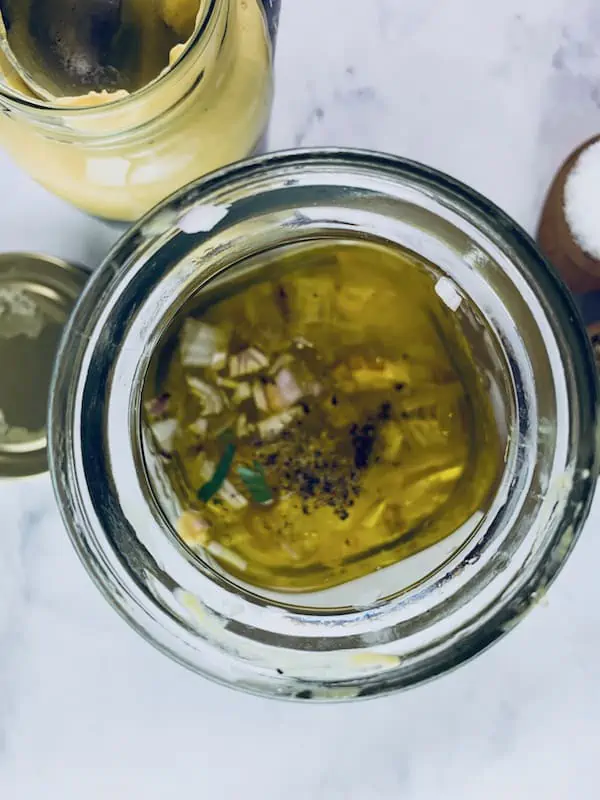
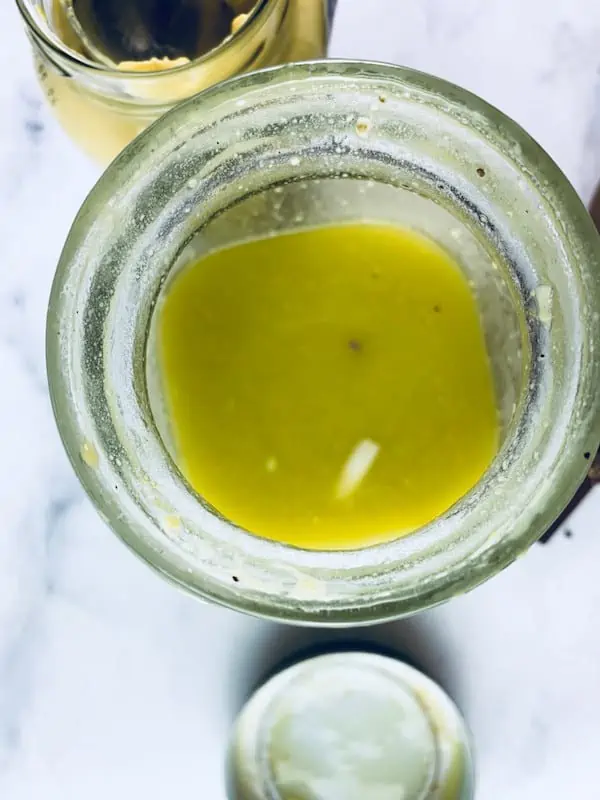
People Also Ask
This recipe makes approximately one and a quarter cups or 20 tablespoons; the nutritional information has been calculated per tablespoon.
This is enough vinaigrette for one large salad that serves eight people
Classic French Dijon Vinaigrette can be stored in a tight jar with a lid so that it’s easy to shake when you need to mix it up before serving.
You can store the vinaigrette in the fridge for a month or so, but as olive oil goes hard in the fridge you will need to allow it to come to room temperature first
Because oil and vinegar are two ingredients that normally don’t mix well together, they tend to separate if left standing too long. This means we have to force them to bind together by either shaking or whisking them vigorously, this is called emulsification. The added mustard also helps to emulsify the vinaigrette.
The short answer to this is yes, what we now refer to as French Vinaigrette in the 19th century was called French dressing.
FYI - vinaigrette comes from the French word for vinegar “vinaigre”.
NOTE: I define a vinaigrette as oil and vinegar based with added flavourings such as herbs, mustards, etc. While I define a dressing as having a thicker consistency with mayonnaise, yoghurt, tahini or nut butter.
A basic vinaigrette recipe that is suitable for all diets, the only thing you need to watch out for is whether the type of mustard you use is gluten-free or vegan. It is a low cal vinaigrette with 75 cals and low-carb with zero net carbs per serve.
More Dressing or Vinaigrette Recipes
- Sumac Vinaigrette
- Basil Caper Dressing
- Lemon Poppyseed Vinaigrette
- Cardamom Vinaigrette
- Turmeric Dressing
Recipe Card
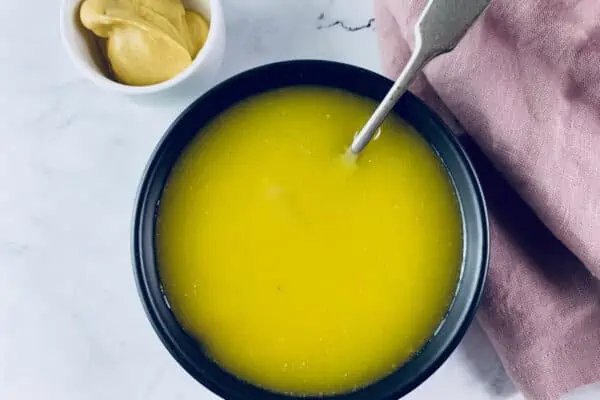
Equipment
- A container that has a tight-fitting lid - glass jars are ideal
Ingredients
- ¾ cup olive oil
- ¼ cup French shallots (eschallots) (finely diced)
- ¼ cup white wine vinegar
- 1 teaspoon Dijon mustard
- 1 clove garlic, minced (optional not traditional but just so good)
- Sea salt and cracked black pepper
Instructions
- Find a container that has a tight-fitting lid - glass jars are perfect for this.
- Add all the dressing ingredients to the container and season, cover it and shake until emulsified.
- Taste and adjust seasonings according to your personal preferences.

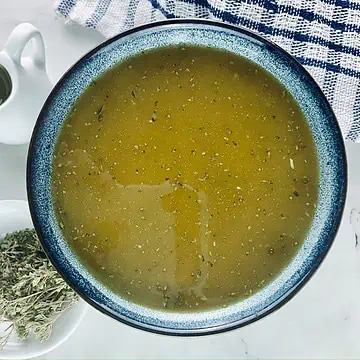
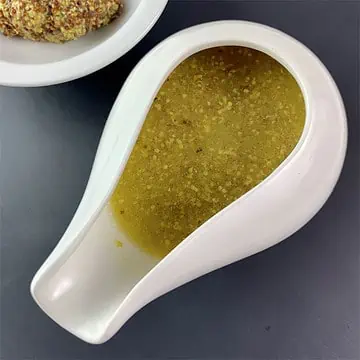
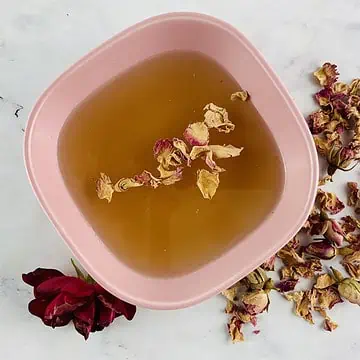
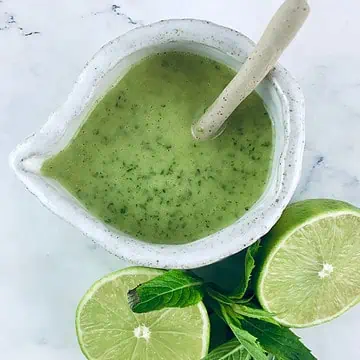
Leave a Reply